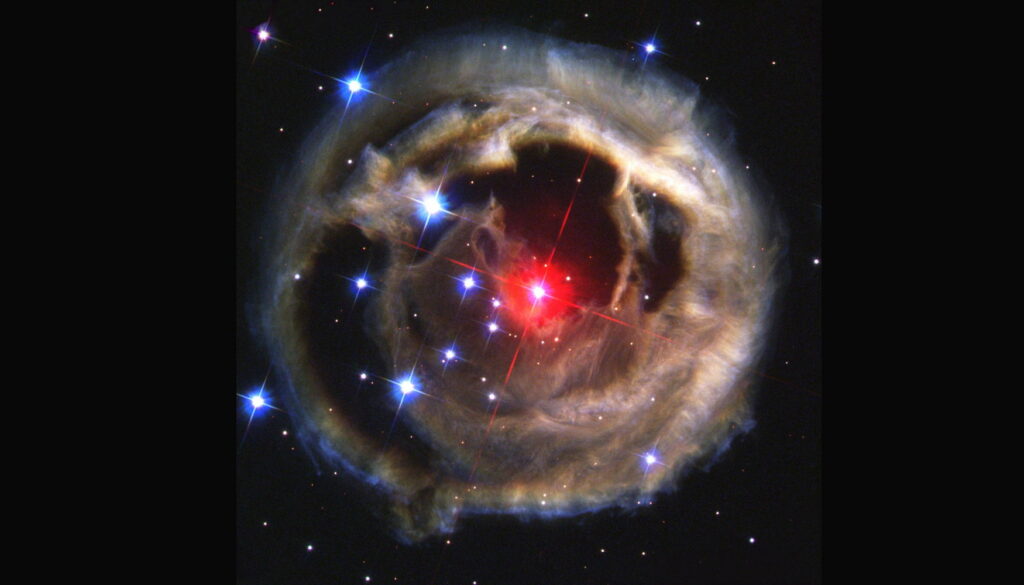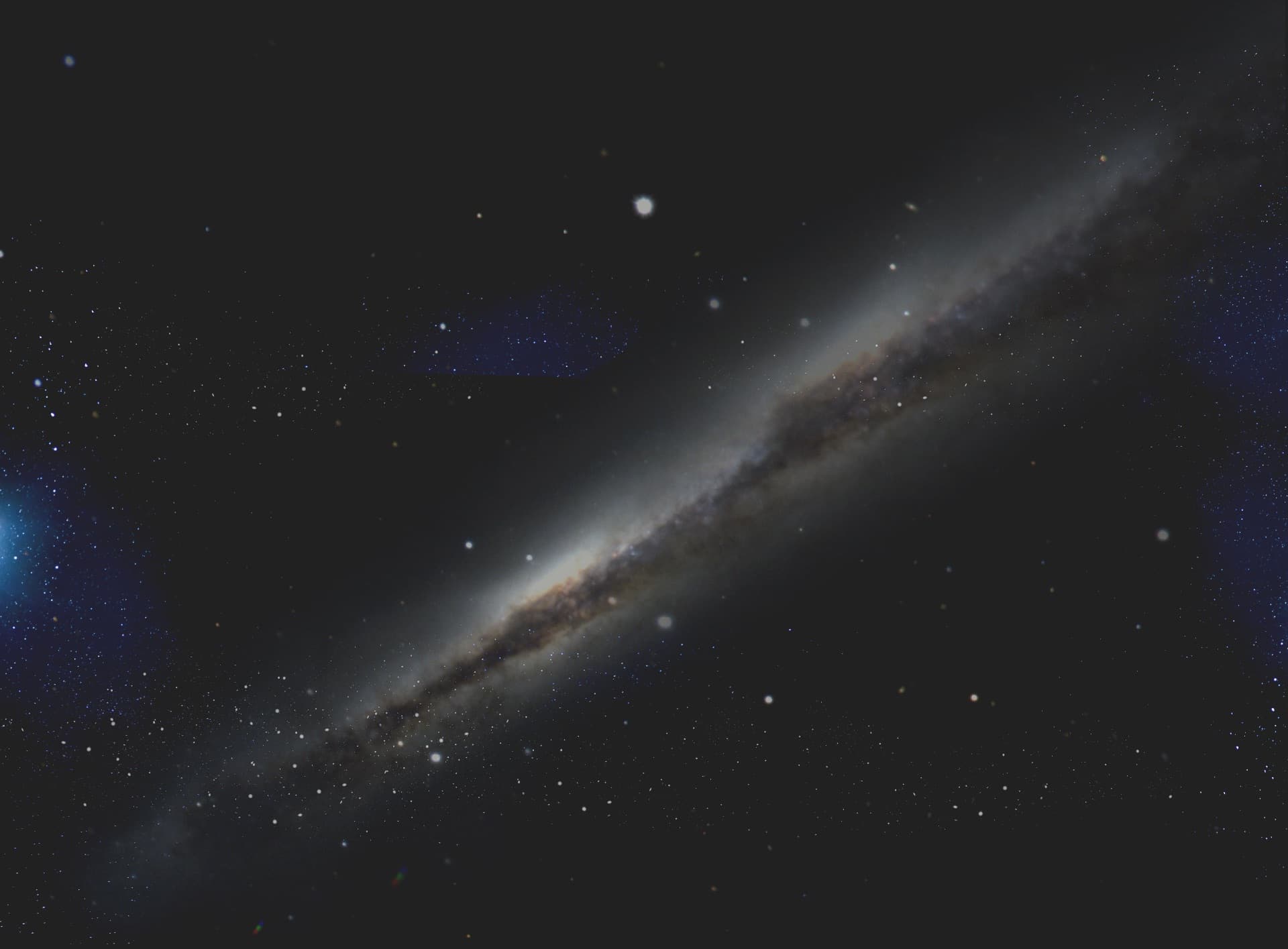April is Global Astronomy Month, and various astronomy and space events are spread throughout the month:
- April 12: Yuri’s Night – In commemoration of Yuri Gagarin becoming the first human venture into space on April 12, 1961, and the inaugural launch of the first Space Shuttle on April 12, 1981.
- April 22, 23: Lyrids Meteor Shower – The Lyrids is an average shower, usually producing about 20 meteors per hour at its peak. This shower is produced by dust particles left behind by comet C/1861 G1 Thatcher
- April 22: Earth Day – An annual event celebrated around the world to demonstrate support for environmental protection. First celebrated in 1970, it now includes events coordinated globally by the Earth Day Network in more than 193 countries.
- April 27: Full Moon, Supermoon – As much as I dislike the word “Supermoon,” the public knows about it, and it’s something that can be promoted.
I’d like to encourage individuals and astronomy clubs to host some kind of astronomy or space outreach event during the month of April – I’m planning on doing a live-stream of Kerbal Space Program during Yuri’s Night – more info to follow!
- The Sky
- The Moon
- The Sun
- Asteroids
- Fireballs
- The Solar System
- Spacecraft News
- Exoplanets
- Aurora
- Light Pollution
- The Universe

Mars appears in the southwestern sky after sunset – Mars continues to appear close to the Pleiades star cluster all week.
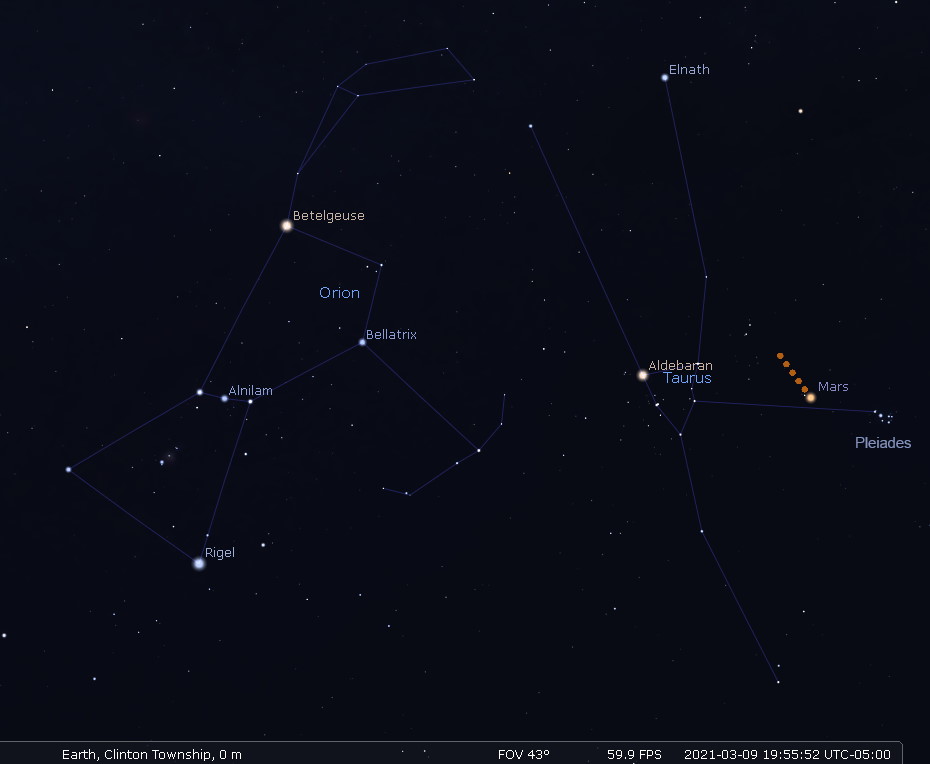
The waning crescent Moon appears near the planet Saturn in the southeastern predawn sky on Tue. Mar. 9th. Mercury and Jupiter appear low on the horizon slightly east of Saturn. Over the week, Jupiter and Saturn appear slightly higher in the sky each morning, but Mercury appears to stay about the same height, and moves eastward towards the rising Sun.
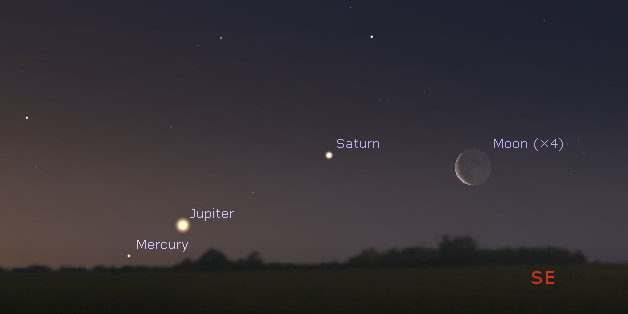
The planet Uranus appears high above the western horizon after sunset this week; the waxing crescent Moon appears low above the horizon on Match 15th.
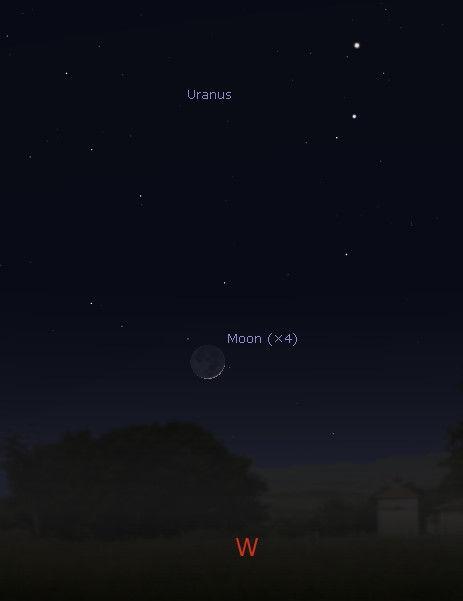

The Moon is a waning crescent – visible low to the east before sunrise.
The new Moon occurs on March 13th.
After March 13th, the Moon will be a waxing crescent – visible toward the southwest in early evening.

If you click on the Moon image above, or click this link, you will go to NASA’s Moon Phase and Libration, 2021 page – it will show you what the Moon looks like right now. If you click the image on that page, you will download a high-rez TIFF image annotated with the names of prominent features – helpful for logging your lunar observations!
Moon News:
 A new sunspot is just rotating into view on the Sun’s northeastern limb. There are multiple regions of coronal loop activity across the Sun’s face; the northern coronal hole continues to appear fairly small, the southern coronal hole is very large, a few other coronal holes appear on the Sun’s face.
A new sunspot is just rotating into view on the Sun’s northeastern limb. There are multiple regions of coronal loop activity across the Sun’s face; the northern coronal hole continues to appear fairly small, the southern coronal hole is very large, a few other coronal holes appear on the Sun’s face.
The Sun seen in 193 angstroms (extreme ultraviolet) March 8, 2021:
Moderate prominence activity again over that last couple days – that bright spot in the lower right is fairly active!
The Sun seen in 304 angstroms (extreme ultraviolet) March 8, 2021:
You can view the Sun in near real-time, in multiple frequencies here: SDO-The Sun Now.
You can create your own time-lapse movies of the Sun here: AIA/HMI Browse Data.
You can browse all the SDO images of the Sun from 2010 to the present here: Browse SDO archive.
Solar Activity on Facebook – Run by Volunteer NASA/JPL Solar System Ambassador Pamela Shivak

Solar Corona
Solar wind speed is 461.0 km/sec, with a density of 5.9 protons/cm3 at 1255 UT.
Near real-time animation of the corona and solar wind from the Solar & Heliospheric Observatory (SOHO):

Sun News

Potentially hazardous asteroids: 2172 (-1! updated 2021-03-09)
Total Minor Planets discovered (NASA): 1,068,235 (+2,503)
Total Minor Planets discovered (MPC): 1,043,048 (-1,695! updated 2021-03-09)
Upcoming Earth-asteroid encounters:
| Asteroid |
Date(UT)
|
Miss Distance
|
Velocity (km/s)
|
Diameter (m)
|
| 2021 EZ |
2021-Mar-09
|
1.5 LD
|
6.2
|
7
|
| 2021 EO |
2021-Mar-10
|
7.1 LD
|
7.9
|
32
|
| 2021 EE2 |
2021-Mar-10
|
11.1 LD
|
14.2
|
29
|
| 535844 |
2021-Mar-10
|
14.2 LD
|
7.3
|
162
|
| 2021 CF6 |
2021-Mar-10
|
4.2 LD
|
8.4
|
62
|
| 2020 FM |
2021-Mar-10
|
18.2 LD
|
13.3
|
56
|
| 2021 EY1 |
2021-Mar-11
|
3.5 LD
|
14.9
|
17
|
| 2021 EA1 |
2021-Mar-11
|
2.4 LD
|
11.7
|
14
|
| 2021 EB1 |
2021-Mar-11
|
8.6 LD
|
14.7
|
71
|
| 2021 ED2 |
2021-Mar-11
|
6.4 LD
|
5
|
6
|
| 2011 YW10 |
2021-Mar-12
|
19.8 LD
|
13.2
|
45
|
| 2021 EX |
2021-Mar-15
|
9.8 LD
|
4.4
|
22
|
| 2021 CX8 |
2021-Mar-15
|
18.2 LD
|
6.6
|
52
|
| 2021 EL1 |
2021-Mar-15
|
13.4 LD
|
6.6
|
55
|
| 2021 DT |
2021-Mar-16
|
18.3 LD
|
7.3
|
34
|
| 2021 DP2 |
2021-Mar-20
|
7.5 LD
|
4.3
|
22
|
| 231937 |
2021-Mar-21
|
5.3 LD
|
34.4
|
1024
|
| 2021 CX5 |
2021-Mar-27
|
7.7 LD
|
5.6
|
48
|
| 2020 GE |
2021-Mar-27
|
12.7 LD
|
1.5
|
8
|
| 2019 GM1 |
2021-Mar-31
|
15.1 LD
|
3.9
|
14
|
| 2015 MB54 |
2021-Apr-06
|
13.6 LD
|
3.7
|
57
|
| 2020 GE1 |
2021-Apr-07
|
12.2 LD
|
4.2
|
14
|
| 2014 FO38 |
2021-Apr-07
|
16.8 LD
|
8.3
|
20
|
| 2020 UY1 |
2021-Apr-15
|
16 LD
|
8.7
|
22
|
| 2017 HG4 |
2021-Apr-16
|
7.6 LD
|
4.1
|
10
|
| 2020 HE5 |
2021-Apr-17
|
8.5 LD
|
4.3
|
10
|
| 2019 HQ |
2021-Apr-20
|
14.8 LD
|
8.8
|
20
|
| 2020 HO5 |
2021-Apr-22
|
16.5 LD
|
3.3
|
7
|
| 2019 PS1 |
2021-Apr-23
|
14.5 LD
|
10
|
16
|
| 2016 QE45 |
2021-Apr-24
|
13.2 LD
|
15.3
|
162
|
| 2015 HA177 |
2021-Apr-26
|
18.7 LD
|
8.7
|
10
|
| 2019 HF4 |
2021-Apr-26
|
7.8 LD
|
6.8
|
11
|
| 2019 VT3 |
2021-May-01
|
12.1 LD
|
5.9
|
8
|
| 2021 AF8 |
2021-May-04
|
8.8 LD
|
9.4
|
344
|
| 2018 JP |
2021-May-05
|
10.6 LD
|
7.8
|
12
|
| 2021 AE4 |
2021-May-06
|
18.5 LD
|
9.1
|
153
|
Notes: LD means “Lunar Distance.” 1 LD = 384,401 km, the distance between Earth and the Moon. Red highlighted entries are asteroids that either pass very close, or very large with high relative velocities to the Earth. Table from SpaceWeather.com
Asteroid News:
 On March 8, 2021, the NASA All Sky Fireball Network reported 6 fireballs!
On March 8, 2021, the NASA All Sky Fireball Network reported 6 fireballs!
(6 sporadics)
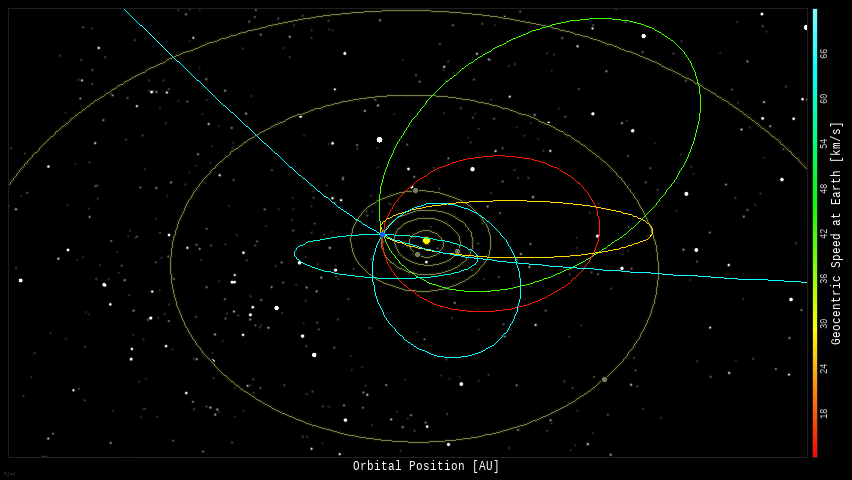
Fireball News
If you see a bright meteor or a fireball, please REPORT IT to the American Meteor Society and the International Meteor Organization!

Position of the planets and several spacecraft in the inner solar system:
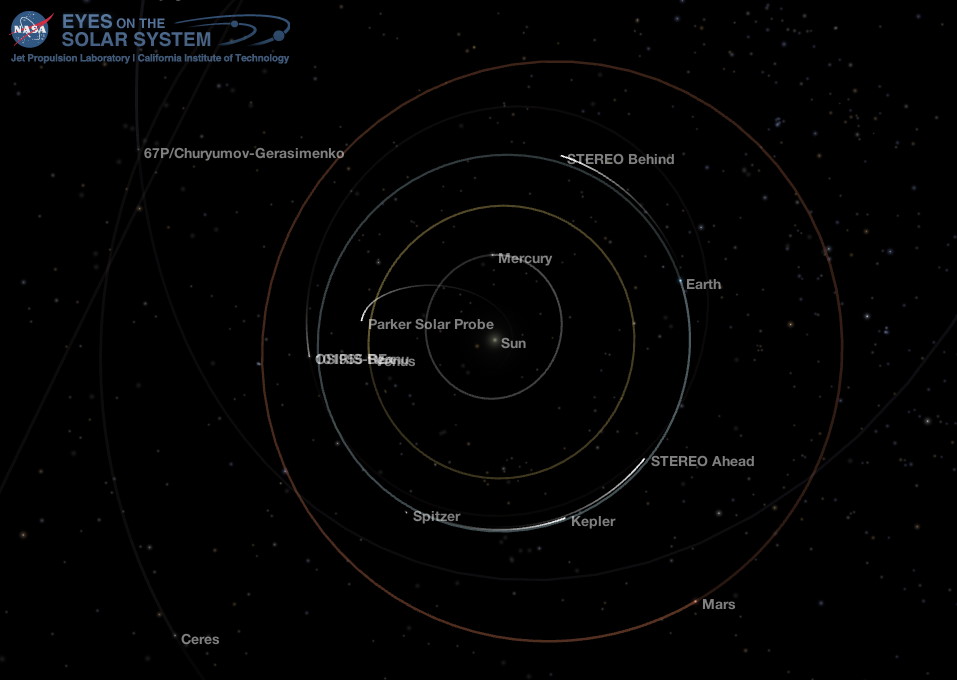
Position of the planets in the middle solar system:
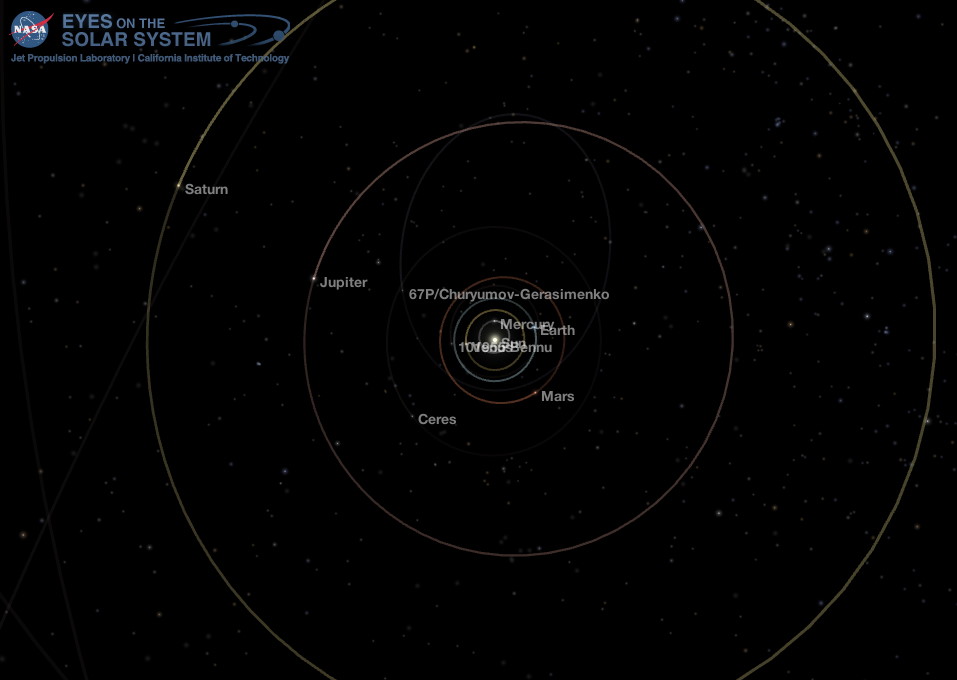
Position of the planets, dwarf planets and some transneptunian objects in the outer solar system:
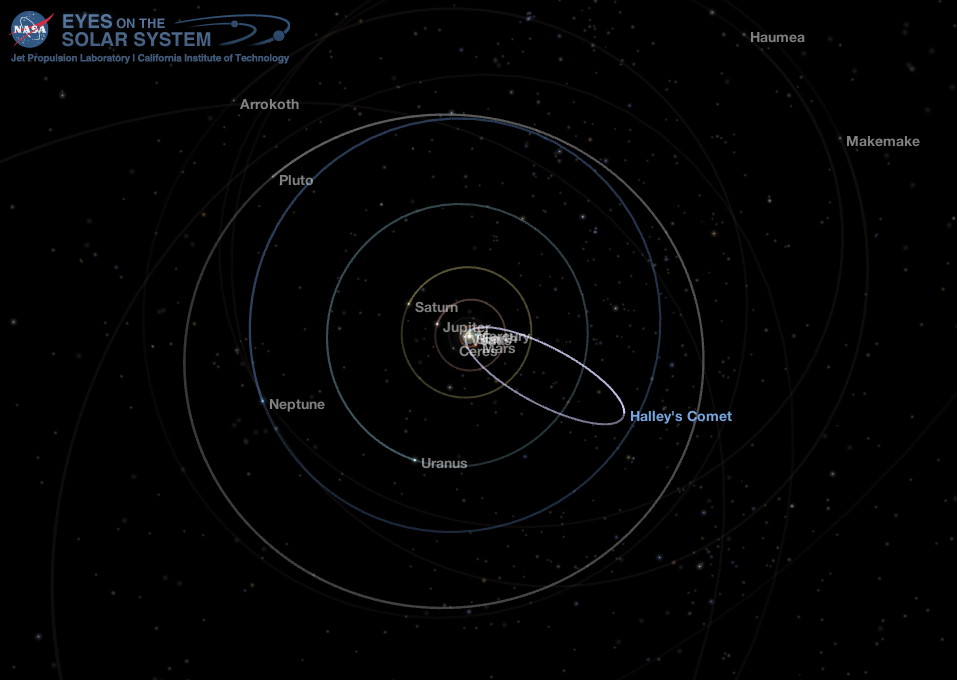

Mars Perseverance Rover:
International Space Station:
#TournamentEarth – Vote for your favorite photo taken by NASA Astronauts from the ISS!
HiRISE – on the Mars Reconnaissance Orbiter:
Hubble Space Telescope:
Climate:
See a list of current NASA missions here: https://www.jpl.nasa.gov/missions/?type=current

ex·o·plan·et /ˈeksōˌplanət/, noun: a planet orbiting a star other than the Sun.
Data from the NASA Exoplanet Archive
* Confirmed Planets Discovered by TESS refers to the number planets that have been published in the refereed astronomical literature.
* TESS Project Candidates refers to the total number of transit-like events that appear to be astrophysical in origin, including false positives as identified by the TESS Project.
* TESS Project Candidates Yet To Be Confirmed refers to the number of TESS Project Candidates that have not yet been dispositioned as a Confirmed Planet or False Positive.
Exoplanet News


SpaceWeather.com Realtime Aurora Gallery: https://spaceweathergallery.com/aurora_gallery.html
 It’s #DarkSkyWeek!
It’s #DarkSkyWeek!
Visit an International Dark Sky Park: https://www.darksky.org/our-work/conservation/idsp/parks/
For Students:
Hubble: Light Echo of V838 Monocerotis
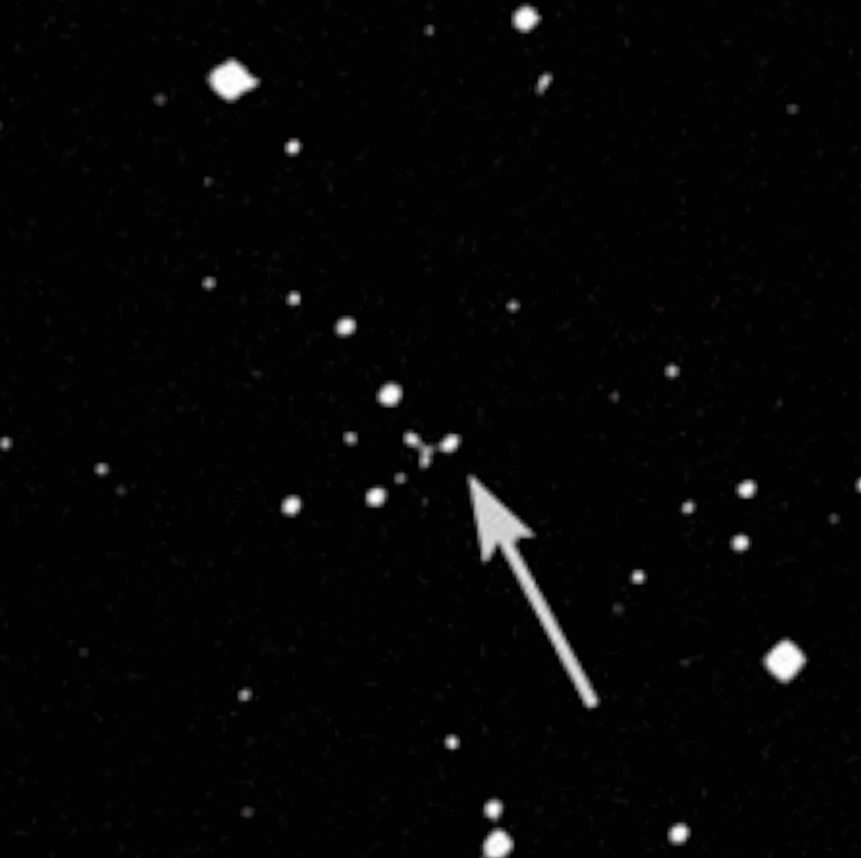
V838 Monocerotis (Nova Monocerotis 2002) is a spectroscopic binary star system in the constellation Monoceros about 19,000 light years (6 kpc) from the Sun. The previously unremarked star was observed in early 2002 experiencing a major outburst, and was possibly one of the largest known stars for a short period following the outburst. Originally believed to be a typical nova eruption, it was then identified as the first of a new class of eruptive variables known as luminous red novae. The reason for the outburst is still uncertain, but several conjectures have been put forward, including an eruption related to stellar death processes and a merger of a binary star or planets.
The eruption occurred on one of two B3 main sequence stars in a close binary orbit. The erupting star became a very cool supergiant and for a while engulfed its companion. By 2009 the temperature of the supergiant had increased (since 2005) to 3,270 K and its luminosity was 15,000 times solar (L☉), but its radius had decreased to 380 times that of the Sun (R☉) although the ejecta continues to expand.
Light Echo
Rapidly brightening objects like novae and supernovae are known to produce a phenomenon known as light echo. The light that travels directly from the object arrives first. If there are clouds of interstellar matter around the star, some light is reflected from the clouds. Because of the longer path, the reflected light arrives later, producing a vision of expanding rings of light around the erupted object. The rings appear to travel faster than the speed of light, but in fact they do not.
In the case of V838 Monocerotis, the light echo produced was unprecedented and is well documented in images taken by the Hubble Space Telescope. While the photos appear to depict an expanding spherical shell of debris, they are actually formed by the illumination of an ever-expanding ellipsoid with the progenitor star at one focus and the observer at the other. Hence, despite appearances, the structures in these photos are actually concave toward the viewer. – Wikipedia
Stay safe, be well, and look up!
Software Apps used for this post:
NASA Eyes on the Solar System: an immersive 3D solar system and space mission simulator – free for the PC /MAC. I maintain the unofficial NASA Eyes Facebook page.
Stellarium: a free open source planetarium app for PC/MAC/Linux. It’s a great tool for planning observing sessions. A web-based version of Stellarium is also available.
Section header image credits:
The Sky – Stellarium / Bob Trembley
Observing Target – Turn Left at Orion / M. Skirvin
The Moon – NASA/JPL-Caltech
The Sun – NASA/JPL-Caltech
Asteroids – NASA/JPL-Caltech
Fireballs – Credited to YouTube
Comets – Comet P/Halley, March 8, 1986, W. Liller
The Solar System – NASA Eyes on the Solar System / Bob Trembley
Spacecraft News – NASA Eyes on the Solar System / Bob Trembley
Exoplanets – Space Engine / Bob Trembley
Light Pollution – NASA’s Black Marble
Aurora – Bob Trembley
The Universe – Universe Today
